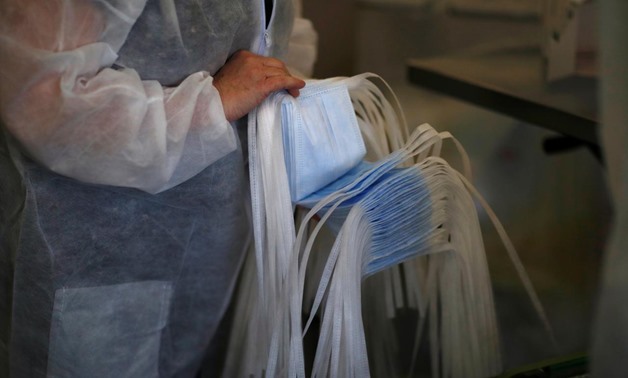
An employee inspects health protection masks at the Kolmi-Hopen company's factory in Saint-Barthelemy-d'Anjou as their activities boosted following the coronavirus outbreak, France, February 5, 2020. Picture taken February 5, 2020. REUTERS/Stephane Mahe
CAIRO – 12 May 2020: There are many types of medical masks in the market, but each type works in a different way to stop bacteria and viruses from entering the human body.
et presents the types of masks and their effectiveness in protecting against the new coronavirus, according to the Times of India and varsoy healthcare website.
FFP1 masks<\b>
Its protection rate against viruses is 95 percent, against bacteria is 80 percent, and against dust is 80 percent.
Regular masks<\b>
Its protection rate against viruses is 95 percent, against bacteria is 80 percent, and against dust is 80 percent.
Masks N 95<\b>
Its protection rate against viruses is 95 percent, against bacteria is 100 percent, and against dust is 100 percent.
Masks made of cloth<\b>
Its protection rate against viruses is zero percent, against bacteria is 50 percent, and against dust is 50 percent.
Mask made to prevent smells<\b>
Its protection rate against viruses is 10 percent, against bacteria is 50 percent, and against dust is 50 percent.
It should be noted that Egypt recorded 346 new COVID-19 cases on Monday after it reached the highest figure (495 cases) at the beginning of this week, according to the Ministry of Health’s daily briefing on Monday.
The Health Ministry said on Monday that 346 people in Egypt tested positive for COVID-19 and eightpeople died with the novel virus in the last 24 hours.
This brings the total number of cases and deaths to 9,746 and 533 deaths respectively since the crisis started, according to the official figures.

Comments
Leave a Comment